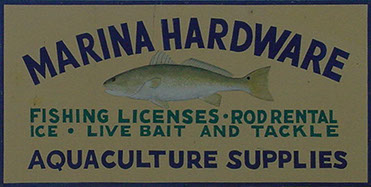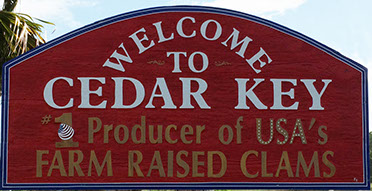Clam farming demands the highest quality of water. The hard clam culture industry has brought economic revitalization to many fishery-dependent communities with a second generation of farmers now making a living on the water.
"
Fish Farming News, October 2013
Our Industry's History
From the 1980s until today
he northern hard clam is a native Florida clam that is also found and harvested in all of the Atlantic states. The industry traces its beginnings in Florida to the Indian River lagoon along the east central coast. During the mid-1980s, unreliable quantities of “wild” hard clams prompted harvesters to investigate aquaculture as an alternative to fishing natural stocks.
At the same time, research was being conducted at Harbor Branch Oceanographic Institution in which traditional culture techniques used in the Northeast were modified for Florida’s subtropical conditions.
During the 1990s, the Florida fishing industry was adversely affected by increasing regulations, so the focus of federally-funded job retraining programs was to expand employment opportunities for commercial fishermen.
These community-based programs provided the infrastructure for introducing shellfish aquaculture as a means of economic growth for rural communities.
Over 350 program graduates were placed onto shellfish aquaculture leases of 2-4 acres – the first leases to be approved along the Gulf of Mexico coast.
The state’s progressive leasing program was the result of the Florida legislature declaring it to be in their economic, resource management, and food production interests to promote aquaculture production by leasing state-owned submerged lands.
Today, it has grown into an industry that supports almost 300 growout operations on over 1,500 acres of state-owned submerged lands off of 12 coastal counties and other spin-off businesses. Florida’s clams rely on the whims of Mother Nature; however, the naturally warm temperatures and high productivity levels of our waters create a superb environment for growing clams.
Growth of the hard clam is almost year round, resulting in a half to a third of the crop time realized in other clam-producing states. In addition, Florida clam growers are able to plant seed year round, enabling them to harvest product continuously. As a result, clam production has increased rapidly over the past 30 years.
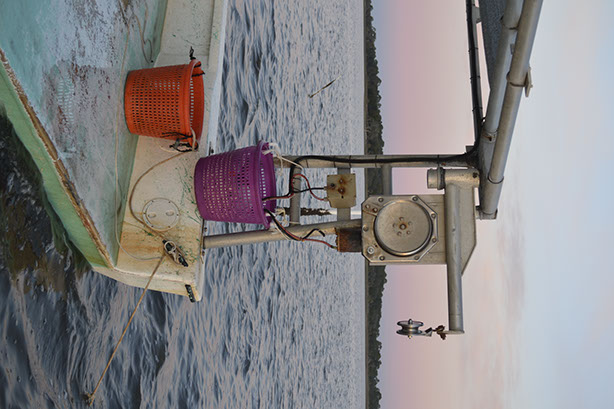
T
Our Industry's Production Statistics
he rapid expansion of the clam culture industry is reflected in the results of aquaculture surveys conducted every other year by the U.S. Department of Agriculture (USDA), National Agricultural Statistics Service (NASS). Production of 2.4 million clams was first reported in 1987 by 13 growers.
Twelve years later, 351 growers reported over 134 million clams produced in 1999. Corresponding farm gate, or dockside, sales also increased with a value of $16 million reported. The industry was negatively impacted by the hurricanes of 2004-5 with production and sales in 2005 declining to 92 million clams and $9.8 million, respectively. Surveys were not conducted in 2009 or 2011 due to budgetary constraints.
In 2012, the NASS Florida Field Office conducted a Florida Aquaculture Survey. Results from this most recent survey indicate that the clam aquaculture industry rebounded from the hurricane-impacted years. However, sales value reflected the downturn of the economy and reduced prices received by clam growers and wholesalers.
Highlights of the 2012 Florida Aquaculture Survey:
• Sales of mollusks reported by 139 producers were $11.9 million.
• Hard clam sales comprised 98%, while sunray venus clams and oysters accounted for the rest.
• Operations reported 136.3 million clams sold and 256 million seed planted.
The first national census of aquaculture was conducted by the USDA NASS in 1998. Florida was identified as a leading producer of cultured clams (by volume, not value) with 221 growers reporting $9.5 million in sales. In the 2005 census, Florida fell behind Virginia and Connecticut but led the nation in the number of clam farms with 154 growers reporting $10.7 million in sales. The most recent Census of Aquaculture was conducted in 2013.
Highlights of the 2013 USDA Aquaculture Census:
• Florida was fourth in the nation in sales of mollusks with 132 farms reporting $19.64 million, up 68% from 2005 sales.
• Florida led the nation in number of clam farms with 119 growers reporting sales, but values were withheld to avoid disclosing data
for individual farms.
• Ten farms reported sales of other clams (Sunray Venus) and four farms reported oyster sales. Again, sales values were not disclosed.
T
Our Industry's Economic Impacts
I
n addition to actual clam farms, there are many spin-off businesses that have developed in support of the clam aquaculture industry. For instance, there are hatchery operators who produce seed for growers, seamstresses who make clam bags, boat builders who specialize in clam work skiffs, and manufacturers who produce harvesting and processing equipment. Shellfish wholesalers purchase clams from growers, add value, and distribute to markets nationwide. The industry also provides local employment, such as processing plant workers and truck drivers.
The economic impact is much larger than simply the farm gate sales values reported above. University of Florida economists surveyed Certified Shellfish Wholesalers in 1999 and, again, in 2007 to determine the number and value of clams handled in those years to estimate direct, indirect, and induced impacts. The contribution of cultured clam sales was assessed to be $34 million to the state's economy in 1999, increasing to $53 million in 2007, making clam farming an important agribusiness. The most recent study of the economic contribution associated with the Florida clam industry was conducted in 2012.
Highlights of the 2012 UF Economic Impact Study include:
• Value of sales by growers to wholesale dealers was $12.3 million, while value of sales by
dealers was $19.5 million.
• As hard clams made their way from the production site to the final buyer, $21.9 million in
added value was generated.
• The clam culture industry supported 543 jobs and generated $14.7 million in labor income.
• Hard clam sales generated $1.4 million in state/local tax revenues and $2.7 million in federal taxes.
• Finally, the industry output, or gross revenue impact to the state’s economy, was estimated
to be ᅠ$38.7 million.
